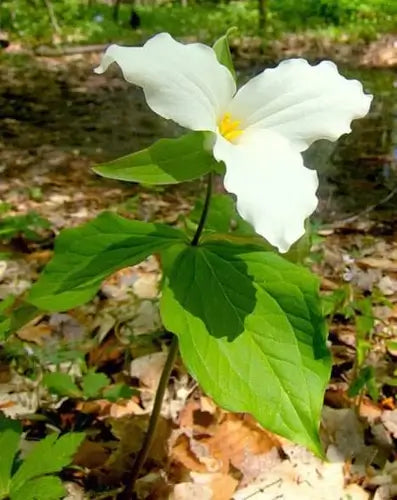Golden Poppy Plant Care and Guide
The Golden Poppy, scientifically known as Eschscholzia californica, is a stunning wildflower native to California, renowned for its vibrant golden-orange blooms and ability to thrive in various garden settings.
The Golden Poppy, scientifically known as Eschscholzia californica, is a stunning wildflower native to California, renowned for its vibrant golden-orange blooms and ability to thrive in various garden settings.
This comprehensive guide will delve into the multiple aspects of Golden Poppy plant care, from cultivation to maintenance and everything in between.
The Golden Poppy is the official state flower of California, and its bright blooms are synonymous with the state's sunny landscapes. This wildflower is an annual plant that completes its lifecycle within a year. It's characterized by feathery blue-green foliage and iconic cup-shaped flowers that vary in color from deep orange to golden yellow.
The blooms generally appear in late winter to early spring, painting the landscape with a burst of color.
Cultivation: Cultivating Golden Poppies is a rewarding endeavor. Here's a step-by-step guide to help you get started:
- a. Choosing the Right Location: Golden Poppies thrive in areas with total sun exposure. Ensure the Soil is well-draining to prevent waterlogging, which can harm the plant's health.
- b. Soil Preparation: These wildflowers are adaptable to various soil types but prefer sandy or loamy. It's advisable to amend the Soil with organic matter such as compost before planting to enhance its fertility and drainage.
- c. Planting Seeds: Golden Poppy seeds can be sown directly in the garden in the fall or premature winter, as they require a period of cold stratification for successful germination.
Care and Maintenance:
Maintaining Golden Poppies is relatively easy, thanks to their natural hardiness. Here's how you can care for your plants to ensure optimal growth and blooming:
- a. Watering: While these wildflowers can tolerate drought conditions, consistent moisture is essential for robust growth and prolific flowering. Water the plants deeply but infrequently, allowing the Soil to dry out between watering sessions.
- b. Deadheading: Regularly deadhead (remove) faded flowers to encourage prolonged blooming. This prevents the plant from directing its energy towards seed production and instead promotes the growth of new buds and blooms.
- c. Mulching: Applying a layer of organic manure around the base of the plants helps retain soil moisture, suppress weed growth, and maintain a much-relaxed root zone during hot weather.
- d. Fertilization: Golden Poppies don't typically require heavy fertilization. If your Soil is poor or lacking in nutrients, you can apply a balanced, slow-release fertilizer during the early stages of growth. Avoid excessive nitrogen fertilizers, as they can grow more foliage at the expense of flowers.
- e. Pest and Disease Management: One of the advantages of growing Golden Poppies is their relative resistance to pests and diseases. However, watch for aphids, which might occasionally infest the plants. You can use a gentle insecticidal soap to control aphid populations if necessary.
4. Propagation: Golden Poppies readily self-seed, meaning they drop their seeds as they mature, leading to new plants in the following growing season. If you wish to collect seeds for controlled propagation, allow the seed pods to develop and dry on the plant before harvesting fully.
5. Wildlife Benefits: Golden Poppies are visually appealing and offer ecological benefits. They attract pollinators like bees and butterflies, supporting local biodiversity. Additionally, their seeds are a food source for birds and other small animals.
6. A Note of Caution: It's important to mention that Golden Poppies are protected in certain areas and should only be collected from the wild with proper authorization. Always source your plants and seeds from reputable nurseries or authorized sellers.
The Benefits of the Golden Poppy Plant:
Enhancing Gardens and Ecosystems The Golden Poppy (Eschscholzia californica), California's state flower, is not just a delightful ornamental plant with its bright, golden-orange blooms. Still, it also offers a range of benefits that extend beyond its aesthetic appeal. From ecological advantages to historical and cultural significance, the Golden Poppy holds a special place in gardens and natural landscapes.
1. Biodiversity and Pollinator Support: One of the most significant benefits of the Golden Poppy is its role in supporting biodiversity. The vibrant blossoms of the poppy are rich in nectar and pollen, making them highly attractive to pollinators such as bees. Golden Poppies contribute to the health and vitality of local ecosystems by providing these essential food sources. As pollinators visit the flowers in search of nectar, they inadvertently transfer pollen from one flower to another, aiding in fertilization and ensuring the production of seeds for future generations of plants.
2. Soil Health and Erosion Control: Golden Poppies possess an extensive root system that helps stabilize Soil and prevent erosion.
3. Habitat and Wildlife Support: The presence of Golden Poppies in natural habitats provides shelter and habitat for various small animals, including insects, birds, and rodents. Birds, in particular, feed on the poppy's seeds, contributing to their nutrition and survival. The dense growth of poppy plants can create safe spaces for animals to nest, find shelter, and seek refuge from predators.
4. Cultural and Historical Significance: The Golden Poppy holds immense cultural and historical value, especially in California, where it has been designated as the state flower since 1903. This wildflower is often associated with the state's identity and natural beauty. It has also been used as a symbol to commemorate significant events and promote environmental awareness. The annual appearance of Golden Poppies is celebrated as a sign of spring's arrival and the renewal of nature's cycle.
5. Medicinal and Therapeutic Uses: Beyond its ecological contributions, the Golden Poppy has been used for its potential medicinal properties. Native American tribes have historically used plant parts for various therapeutic purposes. The California poppy, a close relative of the Golden Poppy, is known for its mild sedative and analgesic properties. It has been used to alleviate conditions such as anxiety, insomnia, and nervous tension. However, it's important to note that any medicinal use should be approached with caution and under the guidance of qualified healthcare professionals.
In conclusion, the Golden Poppy is more than just a pretty flower – it's a vital contributor to the health of ecosystems, a symbol of cultural heritage, and a source of inspiration and joy. As gardeners and nature enthusiasts, we have the privilege of experiencing the multifaceted benefits of this remarkable wildflower. By fostering its growth and promoting its conservation, we can ensure that future generations continue to reap the rewards of the Golden Poppy's presence in our lives and landscapes.

























































 " alt="Featured Collection Perennials " />
" alt="Featured Collection Perennials " />
 " alt="Featured Collection Ferns " />
" alt="Featured Collection Ferns " />
 " alt="Featured Collection Live Moss " />
" alt="Featured Collection Live Moss " />
 " alt="Featured Collection Trees " />
" alt="Featured Collection Trees " />
 " alt="Featured Collection Shrubs " />
" alt="Featured Collection Shrubs " />
 " alt="Featured Collection Vines " />
" alt="Featured Collection Vines " />
